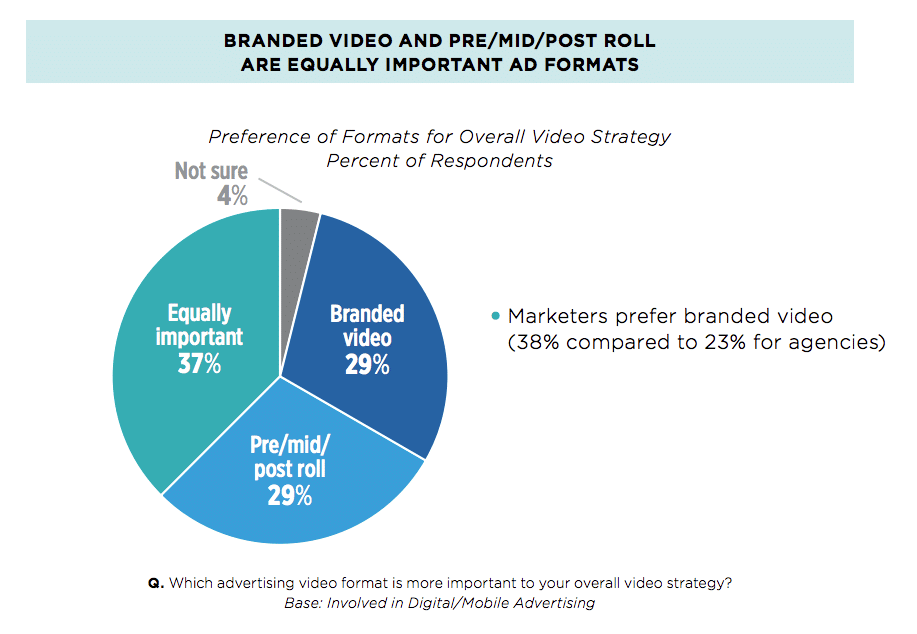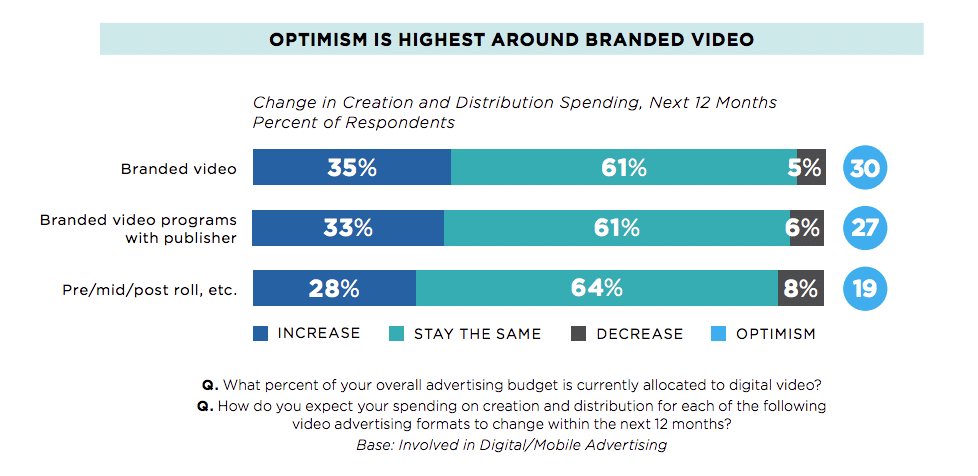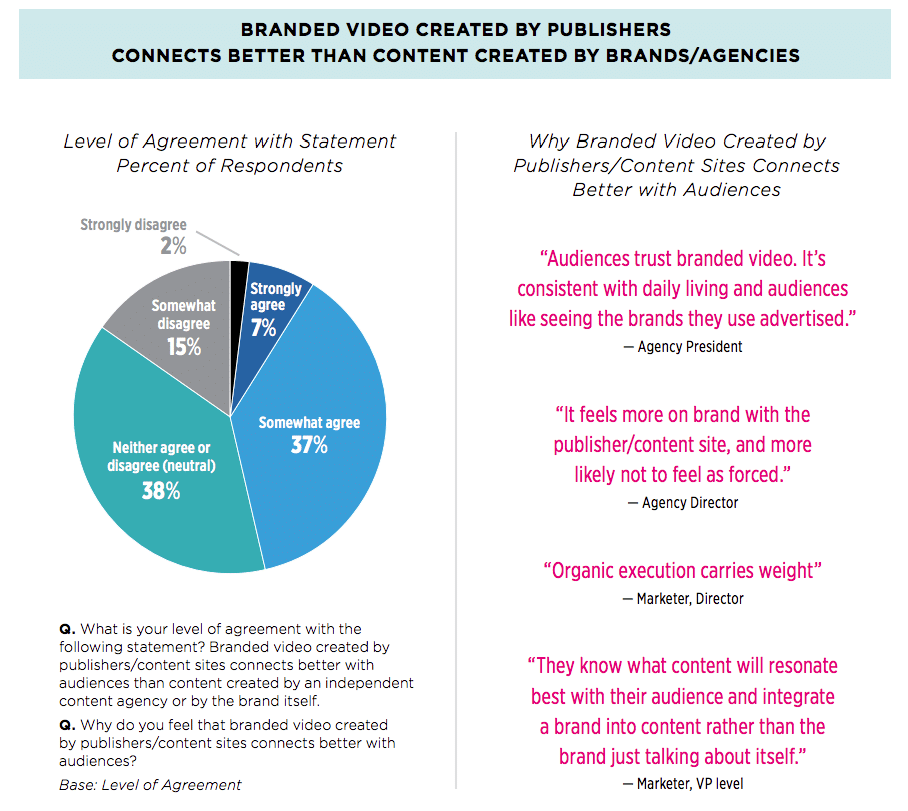New research from Trusted Media Brands and Advertiser Perceptions reveals that marketers plan to increase spending for branded video created by publishers, with less investment in traditional formats such as pre-roll, mid-roll and post-roll advertising.
According to the survey, nearly 4 in 10 (38 percent) of marketers believe branded video is increasingly more important to their overall video strategy than traditional digital ad formats. The new Digital Video Outlook survey also finds that 44 percent of marketers and agencies agree that publisher driven content connects better with audiences than content created by an independent content agency or sometimes the brand itself.
Notably, 33 percent of marketers said they will increase their ad spend on publisher produced content.
“One of the main goals of marketers today is to authentically connect consumers with their brands,” said Vince Errico, Trusted Media Brands’ chief digital officer, in a news release. “As brands seek ways to efficiently produce video to engage their key audiences, branded video will continue to grow in importance and marketers will view publishers as trusted content creators because of their ability to create visually exciting content in brand-safe environments.”
Key takeaways from the research include:
The 30-second pre-roll may be plateauing
Marketers showed increased spending optimism around branded video spending versus pre/mid/post roll ads. 35 percent said they plan to increase spending on the creation or distribution of branded video in the next 12 months versus 28 percent for pre, mid and post-roll advertising.
Publishers are the secret weapon for branded content
Digital marketers reported one of the top benefits for distributing video on premium publisher sites was a brand-safe environment (39 percent), followed by expertise in content creation (33 percent). Measurement was also rated as a top benefit for publishers by nearly one third (31 percent).
Social platforms continue to be the perceived powerhouses for scale and audience targeting
Social received the highest marks for delivering on the ability to scale compared to publisher/content sites (60 percent vs. 30 percent) and engagement (52 percent vs. 35 percent).
Measurement and ROI are also now strengths of premium publishers
Transparency concerns still linger over social platform reporting. When comparing premium publisher sites to social platforms, publishers were said to deliver best on the ability to measure success (53 percent vs. 31 percent), performance/ROI (49 percent vs. 33 percent) and ease of collaboration (47 percent vs. 31 percent).
The Trusted Media Brands survey was conducted in November 2017 among roughly 300 U.S. digital media decision-makers from the Advertiser Perceptions Omnibus Panel. Download the report here.










